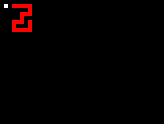Pt En In this post I will show you how I got a neural network to write digits that look like they've been handwritten. In fact, the digits you can see in the first image of this post where generated by said neural network. The code that did all this is here . It all started when I read, some time ago, about this funny way in which you could use neural networks: you are going to train a neural network to take a vector of size $N$ as input, and you are going to teach your network to do nothing. That is, you are going to teach your neural network to behave as the identity function... but with a twist! If your input size is $N$, somewhere in the middle of the network you want to have a layer with less than $N$ neurons! If this happens, you can think that your vector $x$ that is going in, first has to be squeezed through that tight layer, and then it expands again to be the output of the network. If now you slice your network in half, the part of the network from the...




